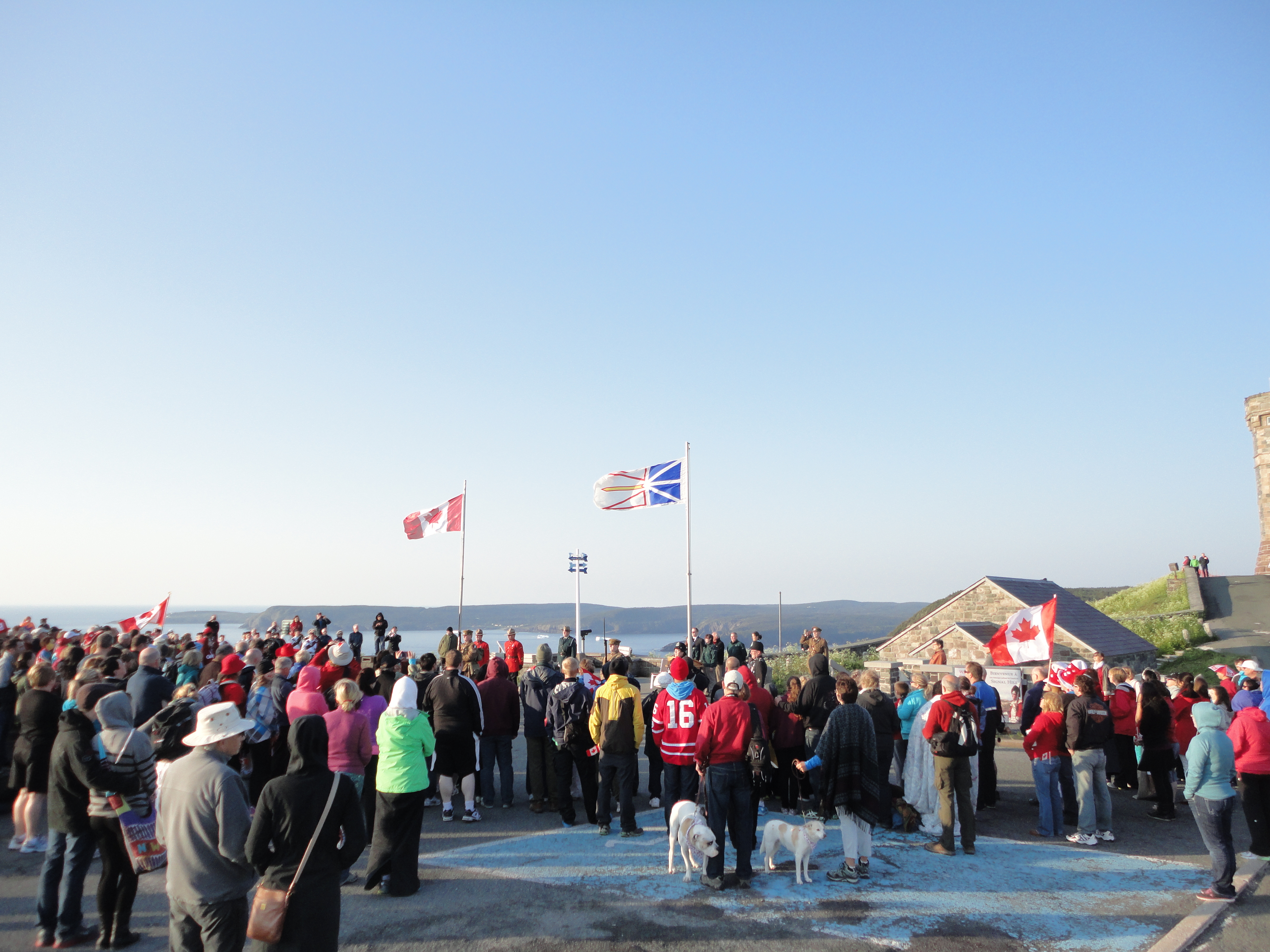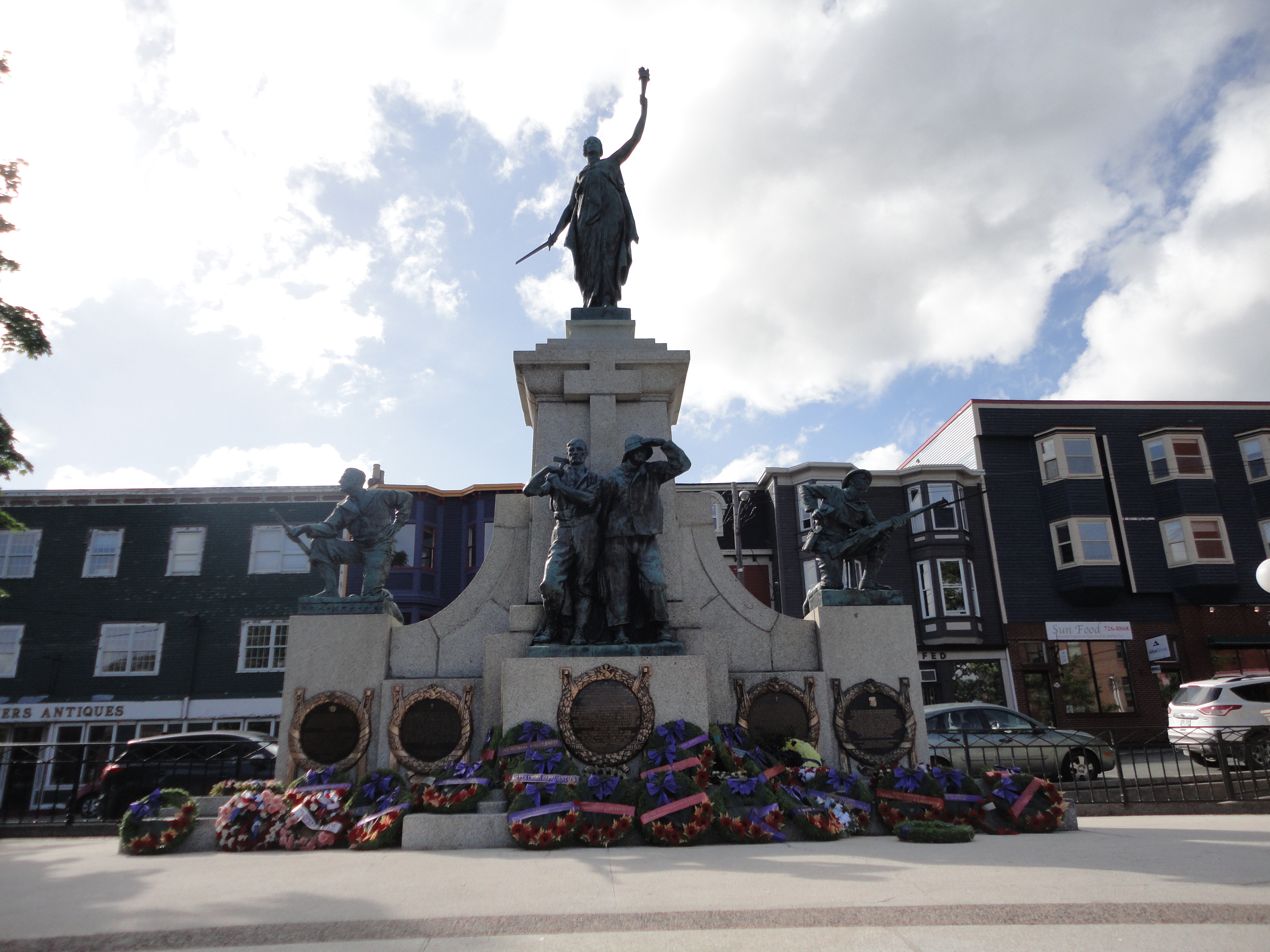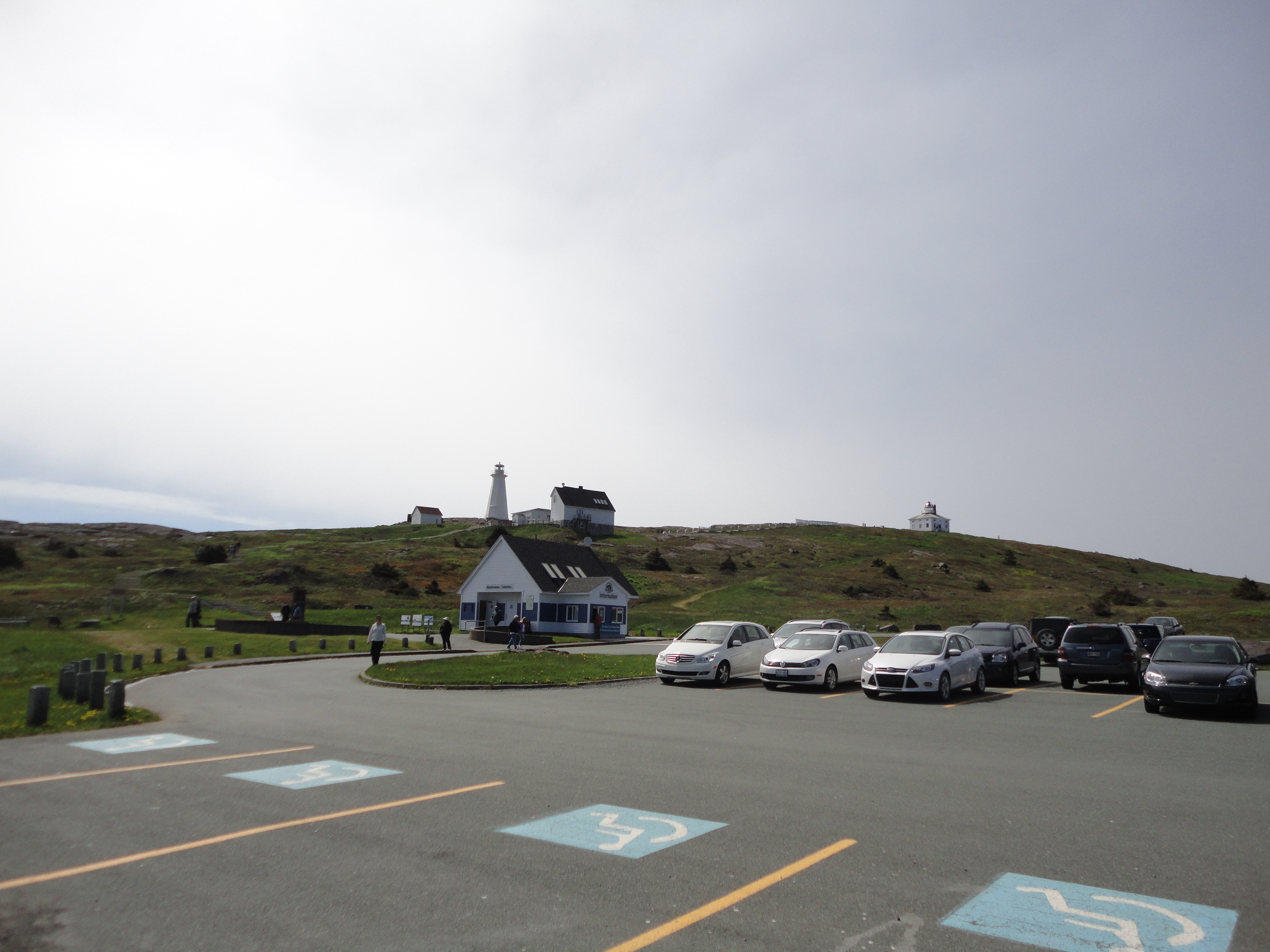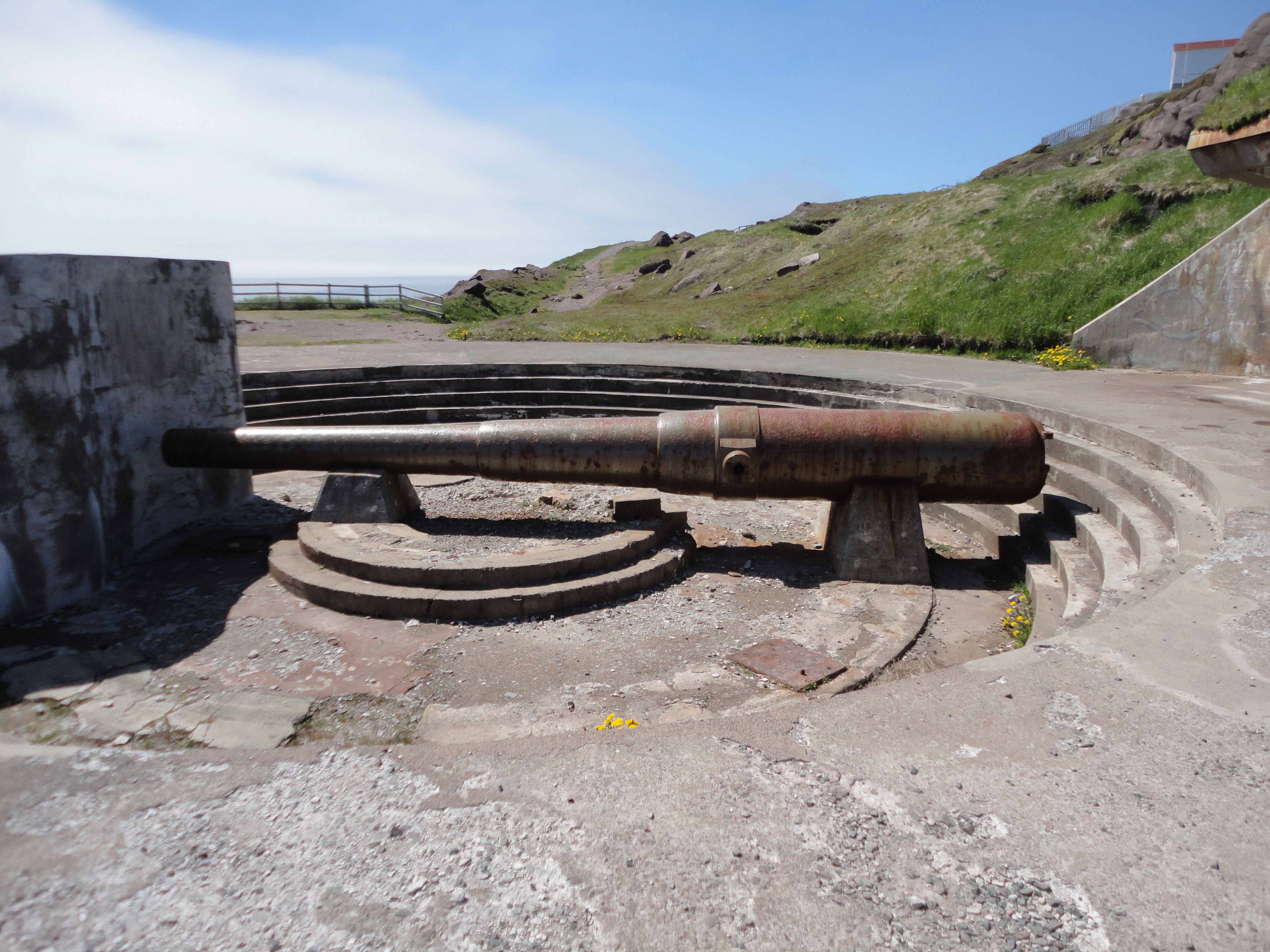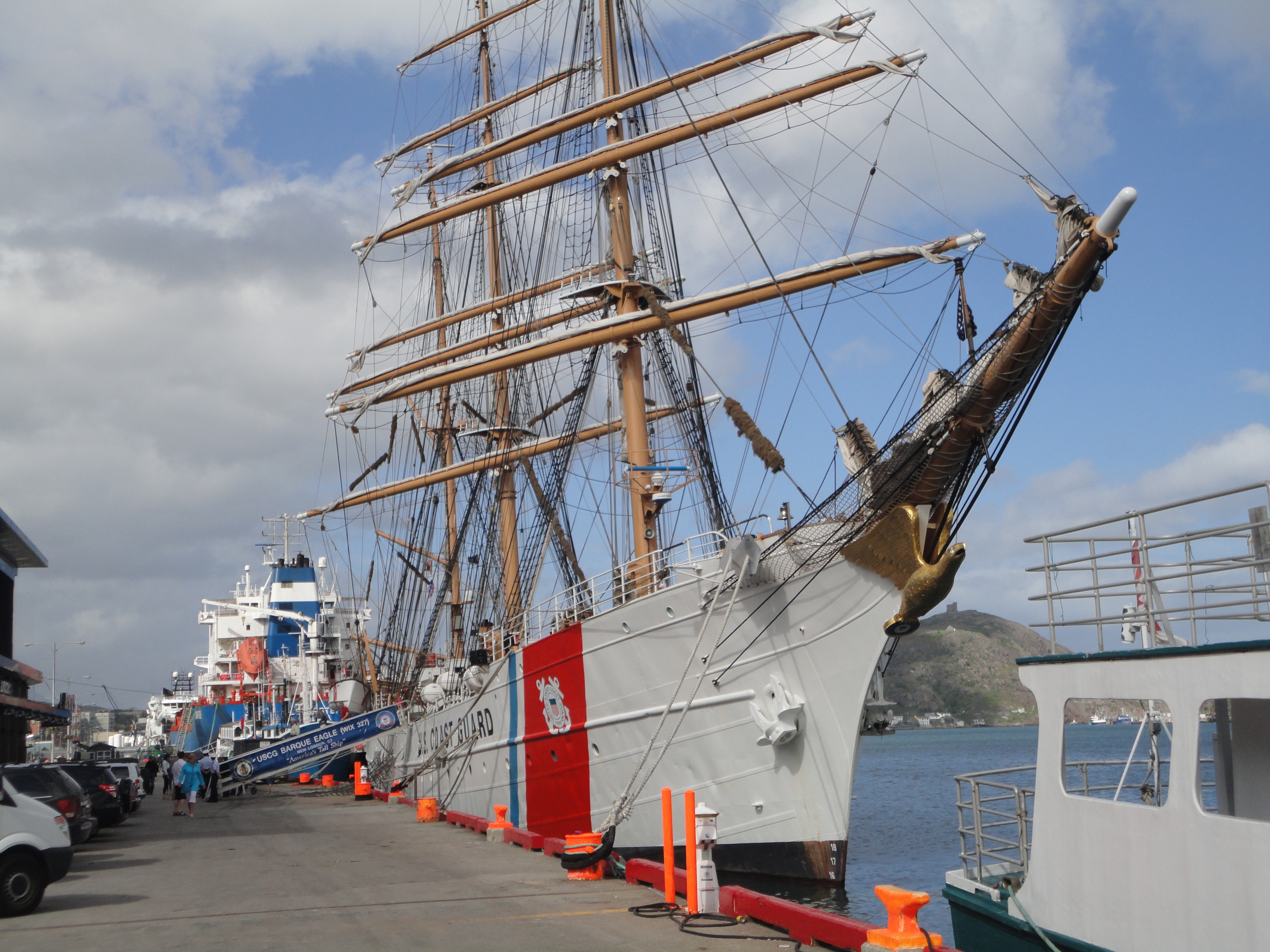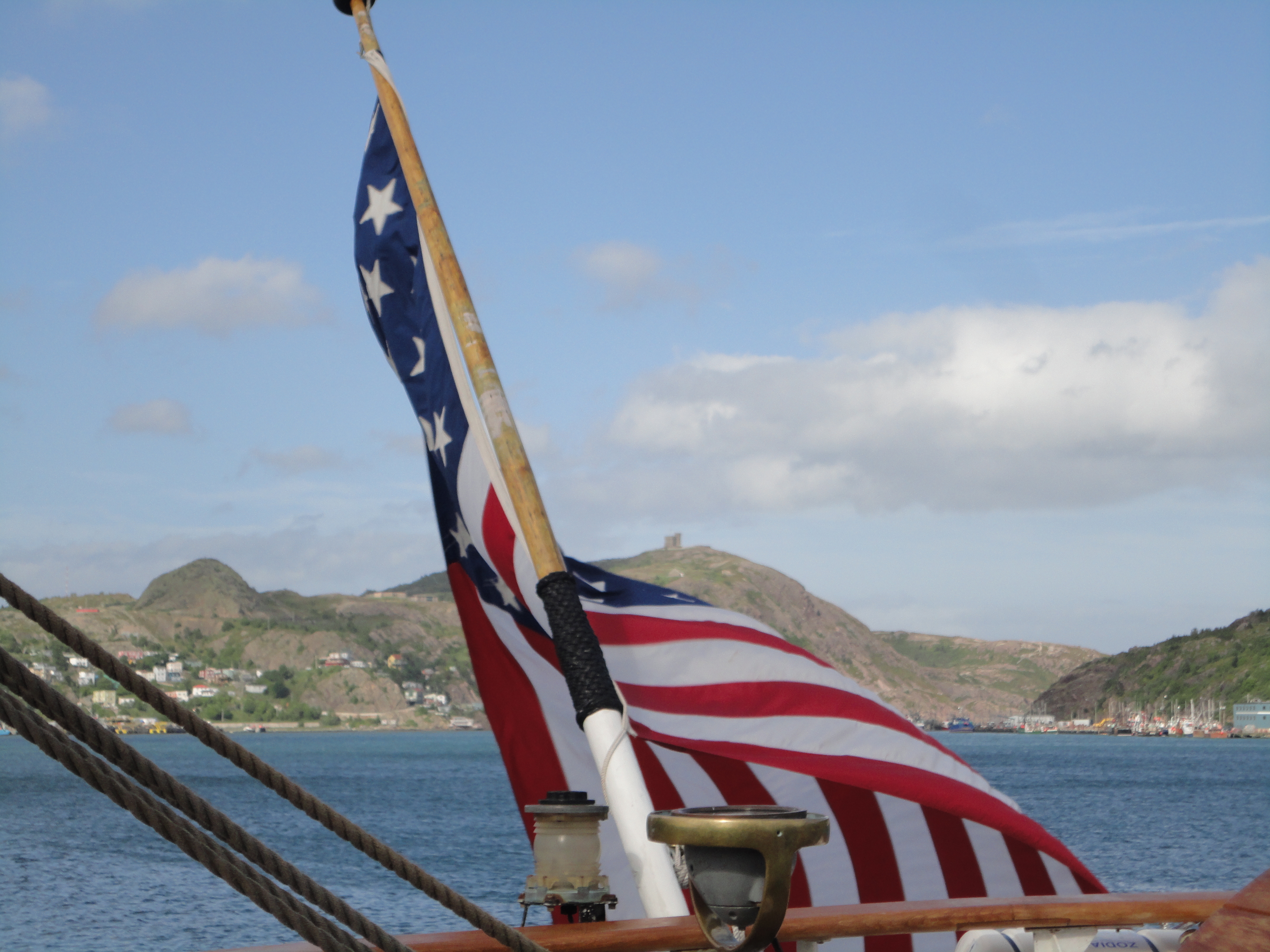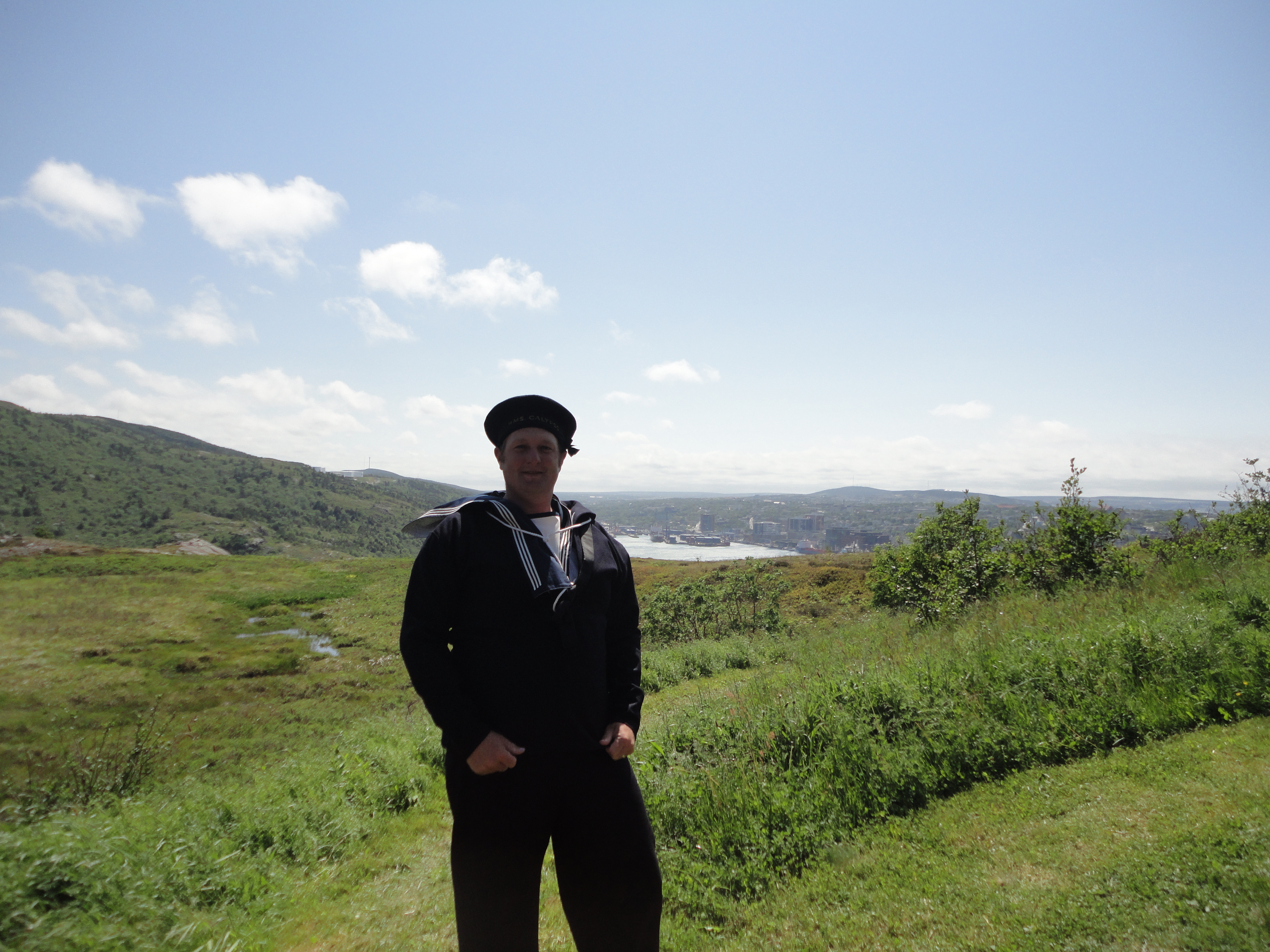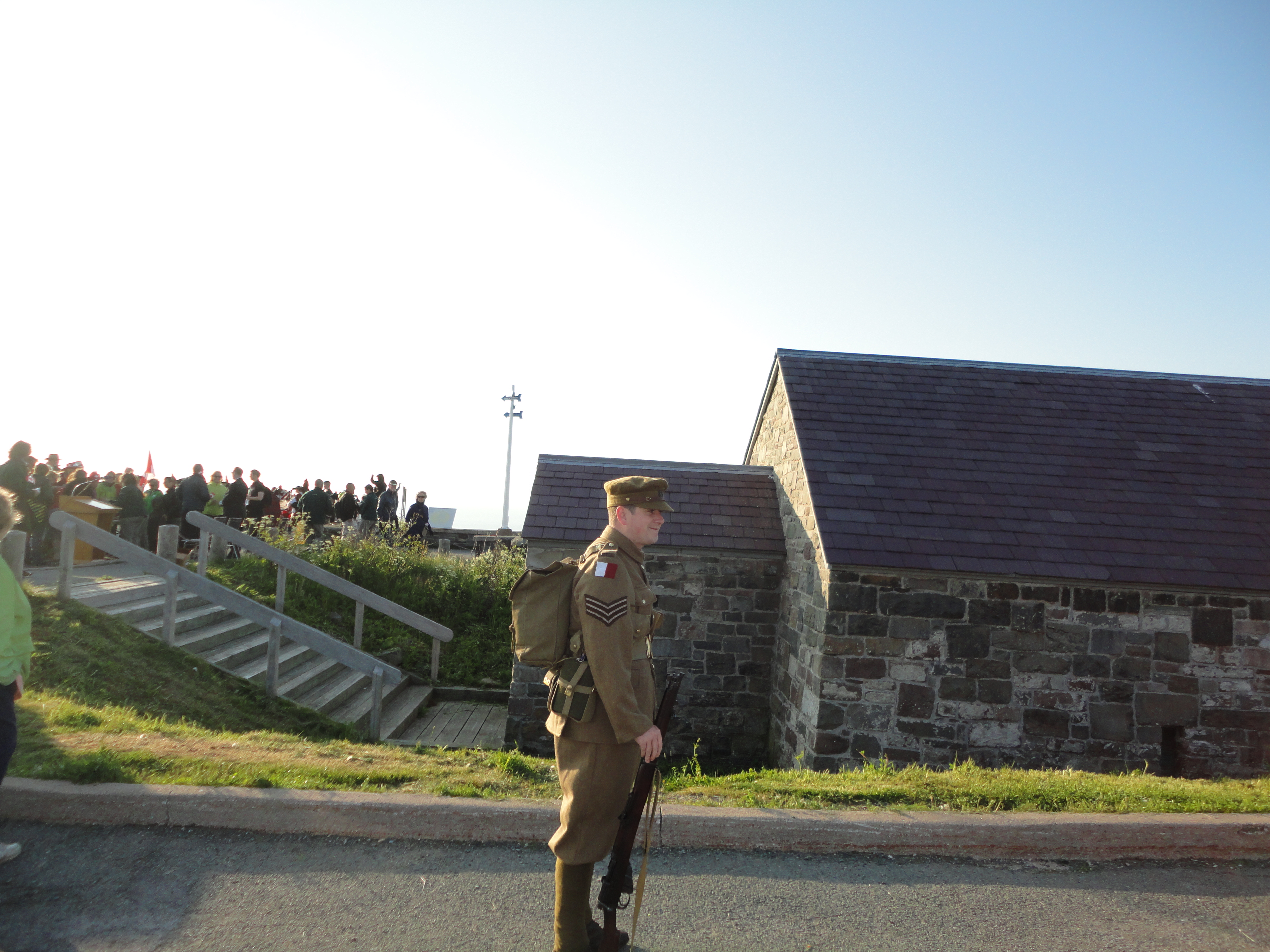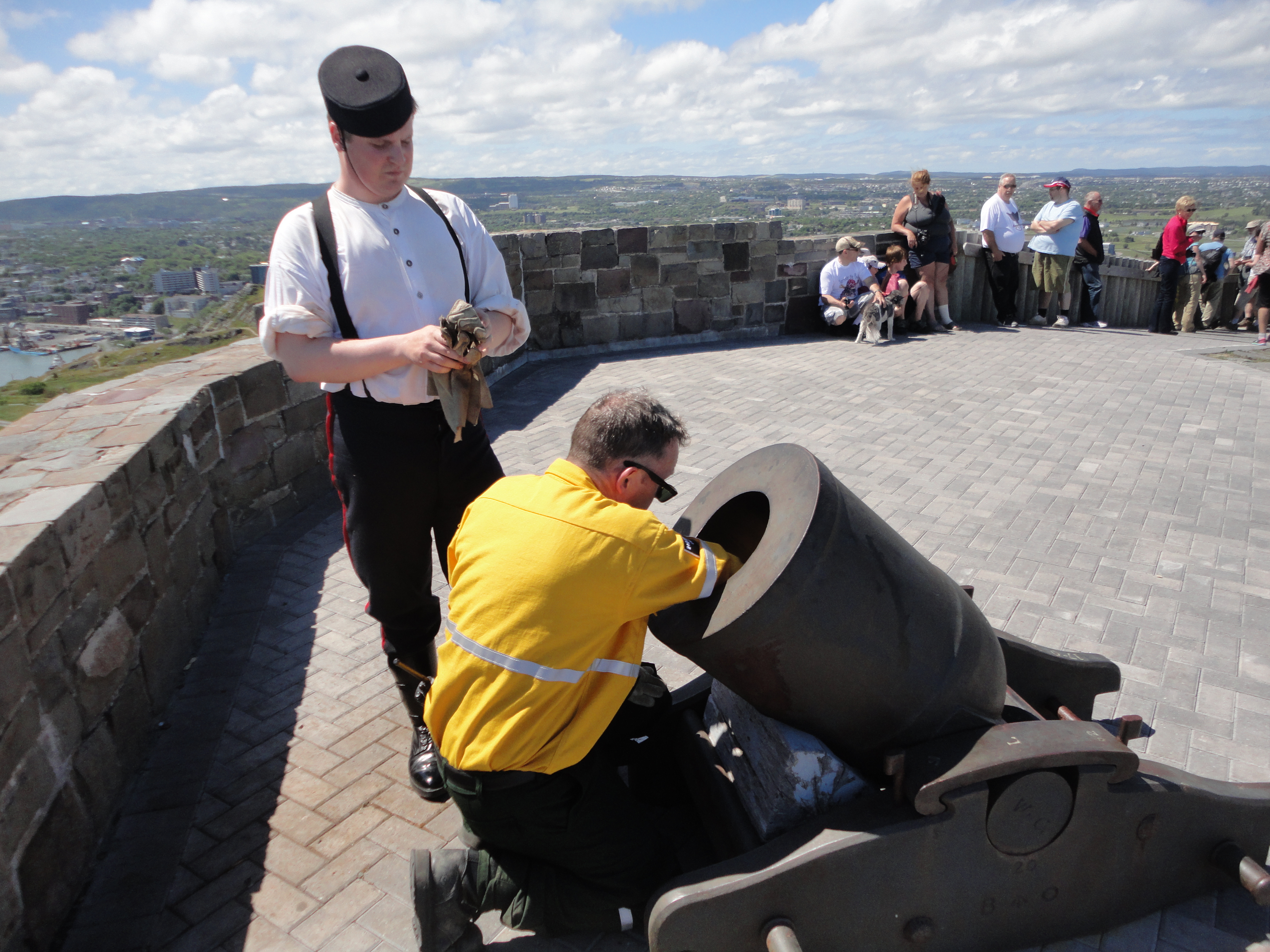I have survived my first week working up here at Signal Hill and I have done a lot so far. The start of the work week was Canada Day. Which was nothing new because in past years PEVI has done something for Canada such as cupcakes and activities for children. What was different was actually being in Canada this year and the fact that in Newfoundland and Labrador July 1st is also Memorial Day. Why do they have the two holidays that are very different combined in one day? Does this idea of combining opposites seem familiar to anyone (i.e. war and peace-Perry’s victory and the peace after the war.) July 1st is Canada because in 1867 the colonies of Canada, New Brunswick, and Nova Scotia joined to form a federation of four providences (Lower Canada-Quebec and Upper Canada-Ontario).
Now the reason for it being Memorial Day was because the first Memorial Day was commemorated in 1917 more than 30 years before Newfoundland became part of Canada (1949). That first Memorial Day was started in remembrance of the Newfoundland Regiment and their sacrifice in the first day of the Battle of the Somme. On July 1, 1916 the regiment went over the top at Beaumont-Hamel. Roughly 800 men started the attack. The next day only 68 men made roll call. Even with additional men returning to the ranks there was only 110 unhurt in the battle. With those additional men the regiment suffered a causality rate of 86%. This was a huge loss to Newfoundland. In comparison The US Brig Lawrence on September 10 had 106 men fit for duty with 83 men killed or wounded. That is a 78% loss. At the Battle of Gettysburg the 1st Minnesota Volunteer Infantry started a charge on July 2nd 1863 with 262 men and will muster only 47 for July 3rd. That is a causality rate of 82%. To help connect those reading this in the United States a little more many men from the states went north when Canada and Newfoundland went to War in 1914 and prior to the United States enter in 1917. Thus some of the men that made that charge on July 1, 1916 may actually have been from the United States.
The Canada Day/Memorial Day Ceremony at Signal Hill was the first in Canada. That day the flags were at half-mast till noon then they went back to full-mast just like Memorial Day in the US. The day ended like the 4th in the US with fireworks. Which from the hill you can see St. John’s fireworks along with many other communities fireworks.
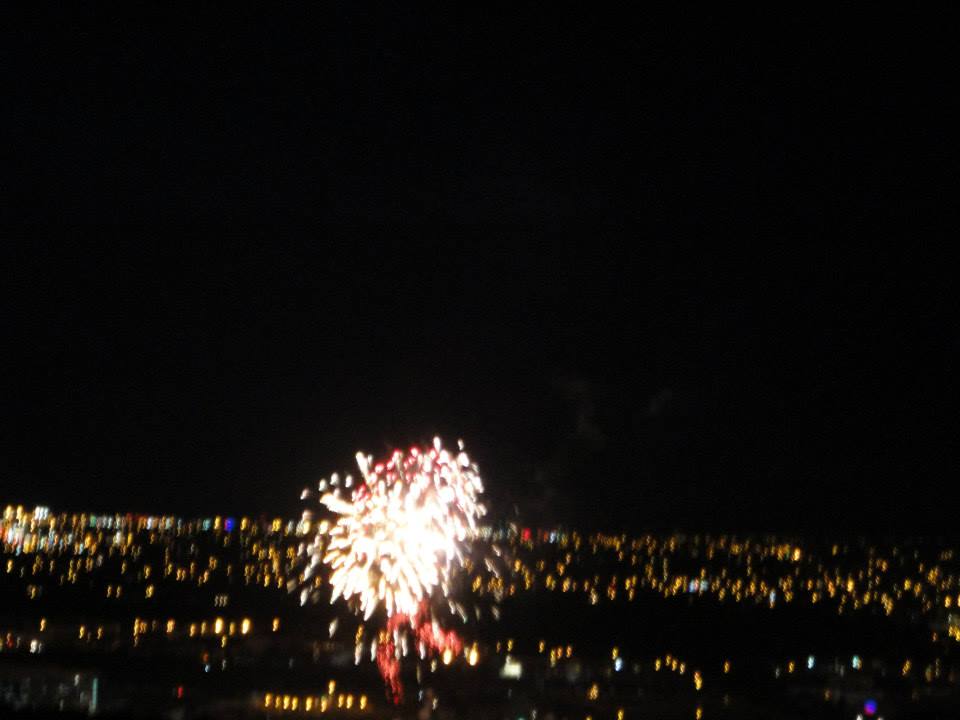
July 4, 2014 was the first time I have been out of the United States on the 4th of July. I just wished Signal Hill had a second flag pole more than ever that day so I could fly the US Flag alongside the Canadian Flag. The morning was spent going out to Cape Spear, the most Easterly Point in Canada and North America, meeting their staff. An interesting fact about Cape Spear was that during World War II it had two 10’’ naval guns for coastal defense. These guns were originally bound for Europe in WW I to be used as rail guns. The US crated them up but they were never shipped since the war ended. When WW II started they were still in their shipping crates so they were given to the British and Canadians and they ended up at Newfoundland as coastal guns. (I will get into World War II in another post.)
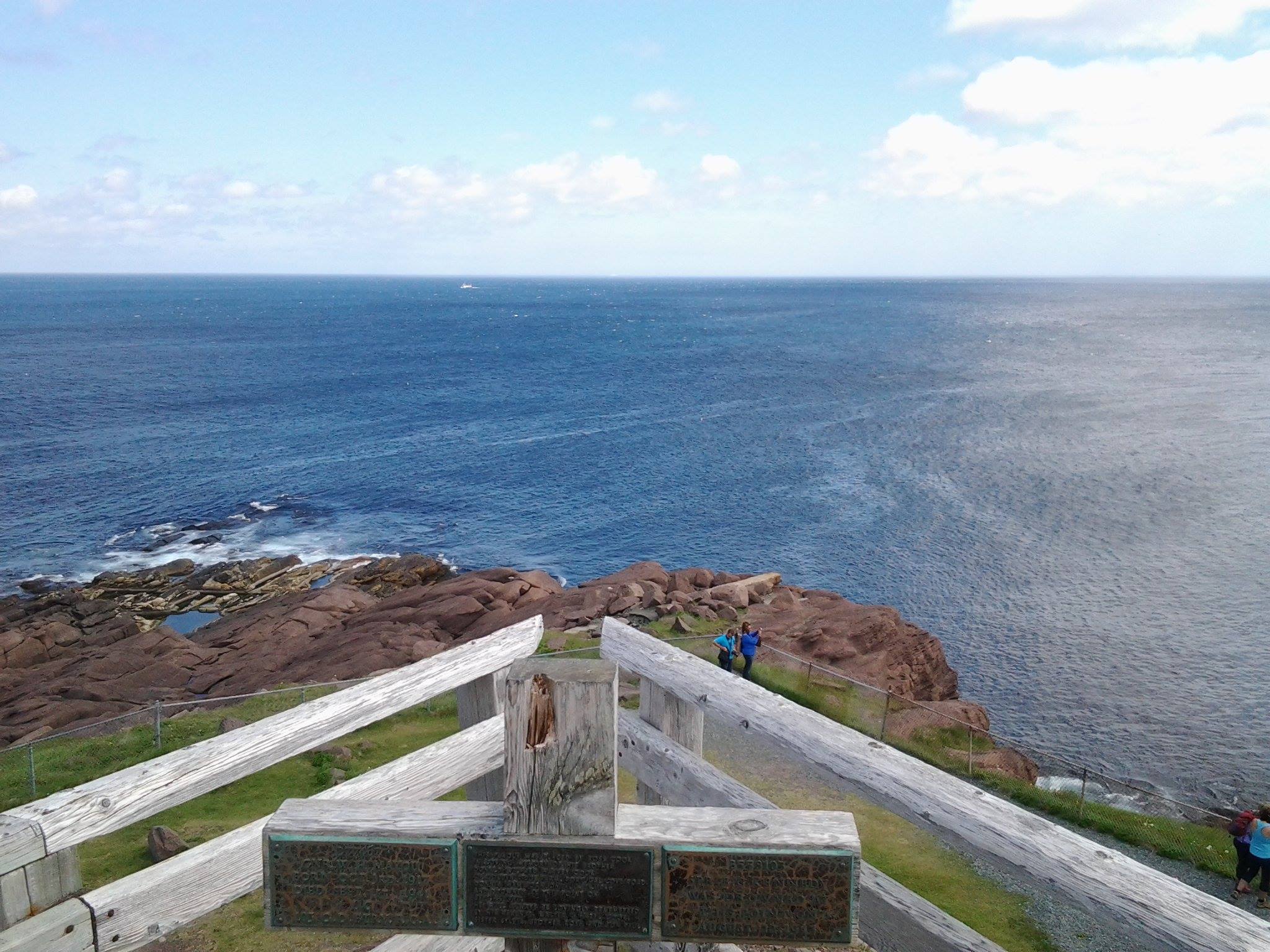
On the way out we noticed a tall ship coming through the Narrows into the harbor. On the return trip to Signal Hill I noticed that it was docked and the flag flying from the top of the mast was the US Coast Guard Flag. Boy, what a sight for someone from the US far from home on the Fourth of July.
So what have I been doing this past week while at work? The mornings have been spent helping get ready for the Noon Day Gun. The kit the Parks Canada employees wear is from The Royal Newfoundland Companies which garrisoned the defenses of St. John’s from 1825 to 1860s. This kit has a lot of leather and buttons that need polished just about every day. It is a very Victorian prime and proper uniform to put it simply. I have gotten to wear my US Infantry kit during several of the firings but have only been safety at this point in time. By the way my shacko and gaiters have not looked this good since they were new. Must afternoons have been hanging out in the Visitor Center learning how to answer the basic questions and helping people when I can. By the way the most asked question at Signal Hill is the same at PEVI. “Where is the bathroom/washroom?” I have been lucky enough to talk to a handful of visitors from the States. The most meaningful visitor contacts have come from visitors from Ontario where they actually know about the War of 1812. One couple had actually been to the Memorial which was an exciting conversation.
Tom from Parks Canada has been busy afternoons with the Signal Hill Tattoo, which could be compared to a friend’s group or cooperating association for the NPS. The Tattoo performs two shows a day four days a week. This year their show is a time line from three different time periods. The fife and drums wear the uniform the Royal Newfoundland Regiment worn during the post American Revolution period. The second period is The Royal Newfoundland Regiment of Fencible Infantry which saw action in the Battle of Lake Erie and many other battles of the War of 1812. The artillery part of the show represents the Royal Artillery of the War of 1812 as well. The third and final part of the performance is World War I. They portray a battle with the men coming out of a trench and moving across no-man’s land. They will also put on gas mask to simulate a gas attack. While the Tattoo was practicing one day I got outfitted with kit of the Royal Newfoundland Naval Reserve. I then roved around the Visitor Center with Jonathan who was in Newfoundland Infantry kit. We explained what we were wearing and also promoted another program Parks Canada is hosting this summer. The program is titled Camp of Instruction and is a full day immersion program. Visitors sign up to be a recruit and get to wear the uniform, eat the food, and learn the drill of World War I. The first one for the year is on Saturday July 12 and they still have openings if anyone is interested.
Saturday I got to help with the proofing firing of a mortar at the site. There are several of these mortar spread throughout Parks Canada sites and this was probably only the second (maybe even the first) to actually be fired. I helped to clean it up but I did not load or fire it. I was a safety during the actual firing and not supervising the firing.
One last note is that everyone from Parks Canada has been very welcoming and friendly and have invited me to staff outings such as dinner and ice cream. This is a great group of people to work with so far and I feel that will continue.
That is all for this week.
Ranger Rob

